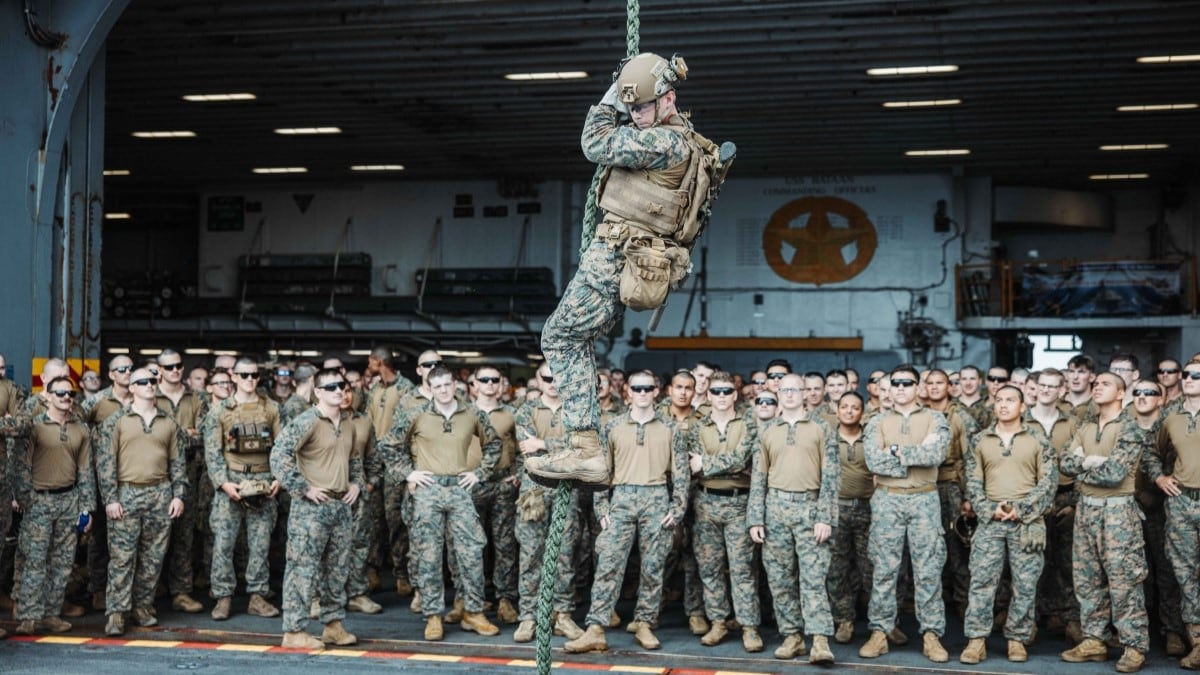WASHINGTON — A congressionally mandated artificial intelligence report released Monday called for billions of dollars of U.S. investment, warning that China “possesses the might, talent, and ambition” to topple the U.S. as the global AI leader.
The 756-page final report from the National Security Commission on Artificial Intelligence, required by the 2019 National Defense Authorization Act, makes hundreds of recommendations to get the U.S. Department of Defense “AI-ready” by 2025 as the U.S. tries to stay ahead of China in the development of artificial intelligence capabilities.
“If the United States does not act, it will likely lose its leadership position in AI to China in the next decade and become more vulnerable to a spectrum of AI-enabled threats from a host of state and non-state actors,” the report warned.
At commissioners’ final meeting to approve the report on Monday, they emphasized that leadership from the White House, Defense Department and Congress is at the core of ensuring an advantage for the U.S. The report calls for emerging technology steering groups at the White House and Defense Department.
“We meant this to be a wakeup call,” said Oracle Corp. CEO Safra Catz, a commission member. “There are very, very bold actions we’re asking for. They are asking in many cases for us to break out from our historical siloes and work together. This is pretty much the critical moment for our country.”
According to the report, an AI-ready DoD is one in which war fighters are “enabled with baseline digital literacy and access to the digital infrastructure and software required for ubiquitous AI integration in training, exercises, and operations.” Preparation of service members is critical because future war-fighting operations will rely on artificial intelligence to assist with targeting and commander decision-making.
The Pentagon should boost its artificial intelligence research and development to $8 billion a year by 2025, up from about $1.5 billion now, the report urged. The DoD spend about 3 percent of its budget on science and technology, the commissioners said, adding that nondefense AI R&D spending should increase to $32 billion by 2026.
“This will be expensive and require a significant change in mindset at the national, agency and White House levels,” Bob Work, vice chair of the commission and former deputy secretary of defense, said at the meeting.
RELATED

Since its inception, the commission delivered four incremental reports, leading to adoption — either fully or partially ― of some recommendations. For example, one recommendation called for an executive steering group on emerging technology, similar to a group form by the 2021 defense policy law.
The commission recommended the Pentagon designate its Joint Artificial Intelligence Center as its AI accelerator, a role the JAIC is preparing to fill. The center, just two years old, will help department components with a suite of services, such as AI-readiness assessments.
To aid the development and fielding of AI tools for war fighters, the report recommended that each combatant command designate “AI delivery teams,” important because “these commands have specific operational needs that routinely outpace centralized development.”
Plus, the deputy secretary of defense should prioritize AI integration into sustainment, logistics, and major wargames and exercises, the report recommended.
Pentagon leaders have acknowledged the importance of artificial intelligence to future battles. Kathleen Hicks, deputy secretary of defense, said in her confirmation hearing that she wanted department leadership to have “broad visibility” in AI projects and measurements to track success. Additionally, the highest-ranking military officials in the Air Force and Marines recently wrote an op-ed calling for increased AI use.
Future warfare will also depend on artificial intelligence-enabled autonomous weapons systems, which raises concerns about compliance with international law. While the U.S. has rigorous procedures to ensure legal use of these weapons, the report called for a U.S.-led effort to set development standards with allies.
“Obtaining allied consensus regarding standards for the development, testing, and use of such systems will set important norms regarding these systems, help to ensure they are developed and used safely, and further highlight the commitment of the United States and its allies to ethical and responsible uses of AI,” the report stated. “The United States should also use these consultations to highlight the ways in which AI will become a crucial part of future military operations and develop common frameworks guiding the appropriate and responsible use of AI-enabled and autonomous weapon systems on the battlefield.”
At the same time, the U.S. must engage with China and Russia on autonomous weapons. The two nations have used unreliable autonomous weapons that pose a danger, the report stated, adding that they are “unlikely to adhere to the same ethical and legal standards” as the U.S. on such weapon systems.
“The United States should use this channel to highlight how deploying unsafe systems could risk inadvertent conflict escalation, emphasize the need to conduct rigorous TEVV, and discuss where each side sees risks of a conventional conflict rapidly escalating in order to better anticipate future responses in a crisis,” the report states.
The reality is that “AI tools will be weapons of first resort,” Work said, “particularly between great powers.”
Andrew Eversden covers all things defense technology for C4ISRNET. He previously reported on federal IT and cybersecurity for Federal Times and Fifth Domain, and worked as a congressional reporting fellow for the Texas Tribune. He was also a Washington intern for the Durango Herald. Andrew is a graduate of American University.










